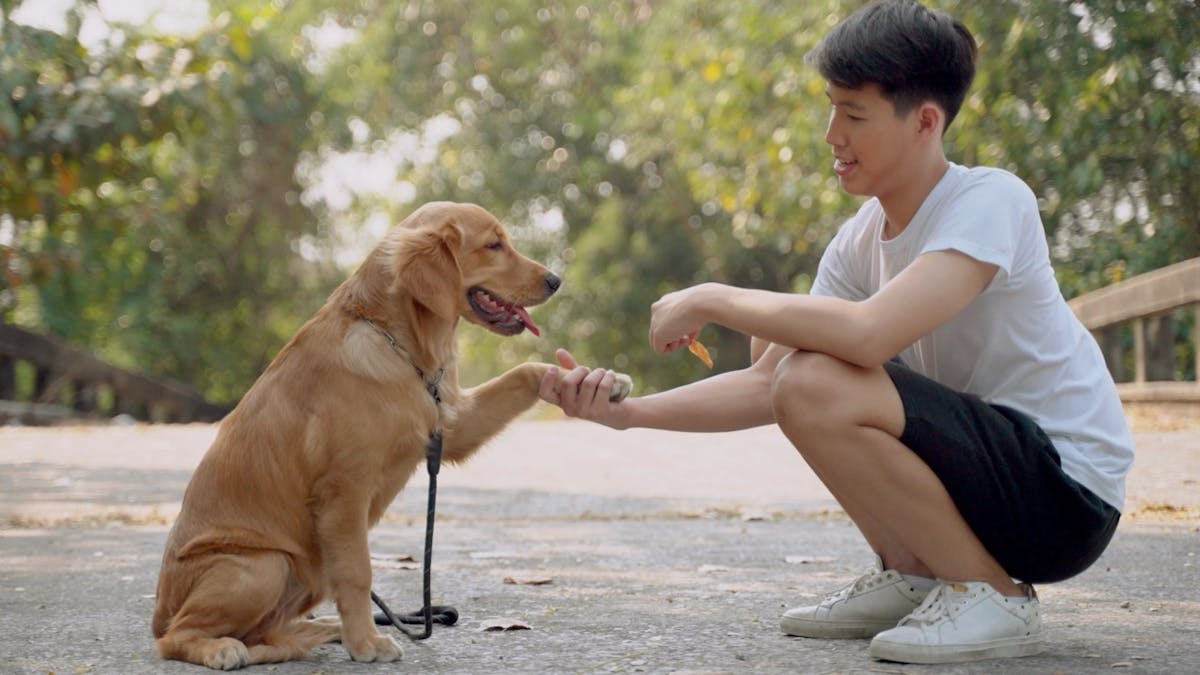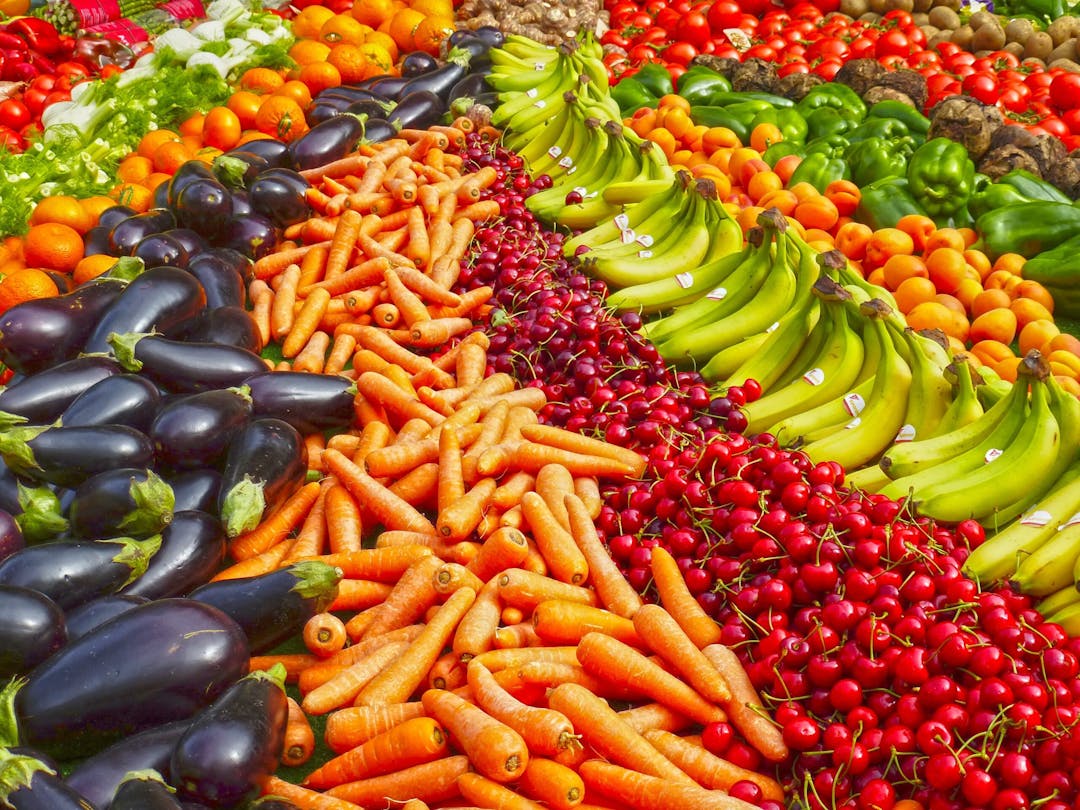Fruits and vegetables are too often overlooked in the diet we feed our pets, both in primary food and as treats. This is a shame since lots of pets enjoy all kinds of fruits and vegetables, and since these foods can be so healthy for your pet.
Here’s what you need to know about feeding your dog or cat fruits and vegetables, including some ideas for encouraging them to try foods they may otherwise turn their noses up at.
Fruits That Are Generally Safe For Your Pet
Apples
Apples are a great source of vitamins A and C and are full of fiber. They are a sweet treat that most pets enjoy either dry or fresh. Be sure to remove the seeds and the core before giving apple slices to your pet.
Because they are quite high in sugar, be sure to only feed them in moderation and avoid feeding them to diabetic pets. Because apples are low in protein and fat, they’re a great treat for most elderly pets.
Bananas
Bananas are a great source of potassium, biotin, vitamins, and fiber. The sweet taste and texture seem to make most pets like them. Bananas are an excellent choice when you are looking for a healthy, easy-to-feed treat for dogs.
Be sure to feed in moderation due to the high potassium and sugar content of bananas.
Blueberries
Blueberries are very high in antioxidants and have phytochemicals and fiber that are very healthy for your pet. Most pets seem to enjoy blueberries, especially when they’ve been frozen. The convenient size makes them easy to add to food and to give as treats. Many pets even like them enough that they can be effective training tools.
Cantaloupe
This is a very affordable treat that is especially good for larger pets in the summertime. Freezing cantaloupe is a great treat thanks to the high content of water and delicious taste, and can provide your pet with a delicious summer snack that they are sure to love.
It is fairly high in sugar, so it should be fed in small quantities.
Cranberries
Cranberries might not be your pet’s favorite treat, since they have a fairly tart taste, but incorporating cranberries into your pet’s diet can have health benefits. Cranberries may benefit bladder and urinary tract health in particular.
It is a great ingredient to add to healthy homemade pet treats. You can also grind dried cranberry into your pet’s food. Talk to your veterinarian about what dose of cranberry may be beneficial for bladder and urinary tract health for your pet in particular.
Vegetables That Are Generally Safe for Your Pet
Many people are surprised that their pets will not only eat but enjoy vegetables as treats.
Vegetables can be very healthy for your pet, and they are an ideal way to give your pet a filling treat without loading them up on calories.
Brussels Sprouts
Brussels sprouts are full of antioxidants and nutrients. Many pets seem to enjoy them. They are a very convenient size as a treat for many pets. However, Brussels sprouts, like cabbage, can cause gas if your pet eats too many of them, so be careful not to overfeed Brussels sprouts to your furry friend.
Carrots
Carrots are one of the best treats for most pets. Pets seem to love them and they are very soothing for pets who want to chew and for teething puppies.
Try freezing carrots for a satisfying summer treat. Whether you use carrots to flavor homemade treats or give them directly to your pet, they are a nutritious treat for your pet.
Celery
Celery is one of the lowest-calorie treats you can offer. It also has vitamins A, B, and C. Tearing apart the celery tends to be very good for a pet’s teeth and they enjoy it as well.
If you are looking for a very low-calorie alternative treat for your pet, celery is a great pick. Just be sure that you cut it into short pieces so that there won’t be any risk of your pet choking on the strands.
Green Beans
Green beans are a great treat for your pet. They have lots of vitamins and minerals that are very healthy as well as being high in fiber. This is a low-calorie treat that is ideal to fill your pet up between meals. Be careful to choose products that don’t contain salt, especially if you’re picking canned green beans.
How To Feed Your Pet Fruits and Vegetables
If you’ve never fed your pet fruits and vegetables before, you may be wondering whether it is really possible to convince your pet to give fruits and veggies a try. It can be challenging to convince some pets to try fruits and veggies for the first time, but if you’re dedicated, you can convince your pet to live a much healthier lifestyle, which could ultimately help keep them around for longer when paired with exercise.
Mix Vegetables or Fruits with More Desirable Foods
One of the easiest ways to convince your pet to try something new is to mix it with something that they already enjoy. Try mixing something that your pet is a bit hesitant about, like bananas, with something that they already enjoy, such as peanut butter.
In this way, you can make the vegetables and fruit that you are offering seem considerably more desirable to your pet and get them used to the idea of eating something that they have previously been unaccustomed to. This is an ideal tactic for pets that tend to be picky about new things but have plenty of enthusiasm for the things that they enjoy.
Try Mixing Fruits and Vegetables Into Treat Toys
Something about putting food into toys just seems to make it more appealing for many pets.
Whether your pet is already accustomed to using a food-distributing toy or not, now is a great time to give them a try.
Put food that you know your pet likes, such as their treats or something desirable like peanut butter, into a food-distributing toy along with a new vegetable or fruit. You will likely find that your pet is excited enough about the food that they also become excited about the vegetables.
Just make sure you properly clean the toy when they’re done.
Why is It Important To Feed Your Pet Fruits and Vegetables?
Your pet food is nutritionally balanced with everything that your pet should need, so why is choosing to integrate fruits and vegetables into their diet a good idea? While commercial foods do have all of the essential vitamins and minerals that your pet needs, these vitamins, and minerals may not be offered in as fresh a state as they would be if you gave your pet all-natural products.
Unlike cats, who are primarily carnivores, pets are omnivores that thrive on a well-balanced diet of lots of different sources of food. Pets that eat grass or strange objects may not be getting all of the nutrition that they need from their pet food.
Talk to your veterinarian about what foods they recommend and whether supplementing their diet with healthy fruits and vegetables is a good idea.
What If My Pet Won’t Eat Fruits and Vegetables?
Some pets may be pickier than others. If you have a very picky eater on your hands, talk to your veterinarian about what supplements they might recommend adding to your pet’s diet.
Probiotics may be beneficial for some pets that may not otherwise be getting as much nutrition as they need from their food. Other pets may benefit from supplements where dietary supplementation is not practical. This is often the case when you are offering foods that pets may not like, such as cranberries.
You can also talk to your veterinarian about options in freshly prepared food. This may not be as quick and easy or as inexpensive as kibble options, but it may provide food that is more bioavailable to your pet. Depending on your pet’s needs, this can be a highly valuable resource for you.
When in Doubt, Ask Your Vet
Do you ever feel like being a pet owner leaves you constantly questioning what the right decision for your pet is? Being a pet owner has some significant challenges. There are no silly questions. Far too many pets end up getting hurt because their pet parents were embarrassed to ask for advice when they needed it.
If you’re ever wondering whether you can offer your pet a particular type of food, or whether you can use a human medication to treat your pet’s illness, or anything else, don’t be afraid to ask.
This is where a service like Airvet comes in handy. In just a couple minutes, you can connect with a veterinarian to ask whatever questions you may have–it’s easy, accessible, and affordable.





